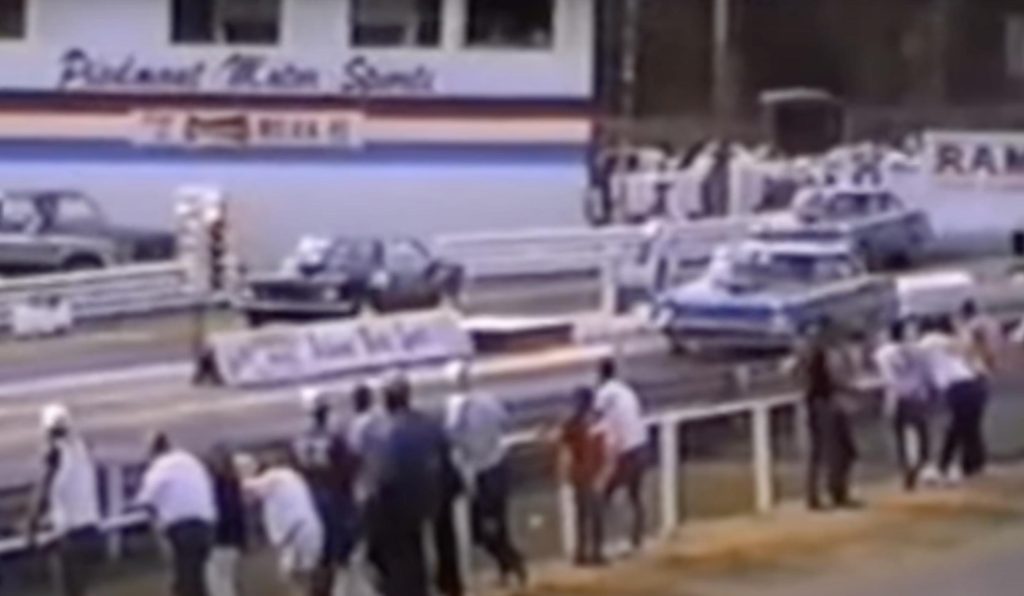In this article, we’re going to take a trip back in time to the 1980s, specifically to Piedmont Dragway in North Carolina. We’ll be exploring the world of stick-shift drag racing, which was a popular sport in the Southeast at the time. We’ll be watching a video featuring a group of racers competing at the Sportsman Class Racing Association, sponsored by Moroso. Stick-shift racing was a tough and exciting sport, and the racers in this video show just how resilient and skilled they were.

The Rise of Stick-Shift Racing
The History of Stick-Shift Racing
Stick-shift racing, also known as manual transmission racing, has been around since the early days of drag racing. It’s a form of racing that requires a high degree of skill and precision, as drivers must manually shift gears at the right moment to maintain speed and acceleration. In the 1960s and 70s, stick-shift racing became more popular, with a growing number of racers using smaller, lighter cars with manual transmissions to compete.

The Popularity of Stick-Shift Racing in the 1980s
By the 1980s, stick-shift racing had become a popular form of racing, particularly in the Southeast. Racers loved the challenge of racing with manual transmissions, and the crowds loved the excitement of watching these skilled drivers battle it out on the track.
The Sportsman Class Racing Association
The Formation of the Sportsman Class Racing Association
In the late 1980s, the IHRA discontinued class racing outside of three index categories. This was a major blow to sportsman drag racing in the Southeast, as many racers had been competing in class racing events. However, the racers did not give up. They reformed themselves into different groups, one of which was the Sportsman Class Racing Association.

The Moroso Sponsorship
According to the notes presented with the video, Moroso was a big sponsor of the Sportsman Class Racing Association. This sponsorship allowed the group to race hard and with strong volume wherever they went. It was a testament to the resilience and determination of the racers involved.
The Video
The Cars and the Racers
The video features a group of racers with small block stick-shift drag race cars. These cars were smaller, lighter, and typically had manual transmissions. They were challenging to drive, and required a high degree of skill and precision to race.

The Racing
The racing in the video is intense and exciting. The racers launch at 10,000 RPM and rip their shifts down the course. The crowds cheer as the cars speed down the track, and the announcer calls out the times and speeds of each racer.
Conclusion
Stick-shift racing was a popular and challenging sport in the 1980s, particularly in the Southeast. Despite the discontinuation of class racing outside of three index categories by the IHRA, racers were resilient and formed groups like the Sportsman Class Racing Association to continue competing. The video we watched showcases the skill and determination of these racers, and their love for the sport.

FAQs
- What is stick-shift racing?
Stick-shift racing, also known as manual transmission racing, is a form of drag racing that requires drivers to manually shift gears to maintain speed and acceleration. - When did stick-shift racing become popular?
Stick-shift racing became more popular in the 1960s and 70s, and by the 1980s it was a popular form of racing, particularly in the Southeast. - What happened to class racing in the Southeast in the late 1980s?
The IHRA discontinued class racing outside of three index categories for the 1988 season, which was a major blow to sportsman drag racing in the Southeast. - How did the racers respond to the discontinuation of class racing?
The racers did not give up. They reformed themselves into different groups, one of which was the Sportsman Class Racing Association, and continued competing. - What is the Sportsman Class Racing Association?
The Sportsman Class Racing Association was a group of racers who formed in response to the discontinuation of class racing outside of three index categories. They were sponsored by Moroso and raced hard and with strong volume wherever they went.